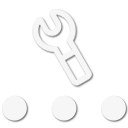I debated not replying to this thread. IMO it is miscategorized as it is not a "special needs" topic, and it is a year and a half old, so odds are the OP has already made a decision on how to resolve their problem, but...
I am seeing a lot of incomplete or incorrect understanding of shock absorbers here...
A shock absorber does not control the weight capacity (as was correctly pointed out a number of times) (well not since the late 70s or so when they used air adjustable shocks instead of air bags to control ride height of tow vehicles pulling campers. My understanding is those where not actually shocks, but rather basically airbags in a shock body)
A spring without a shock absorber will bounce between compression and extension until it dissipates all of the energy of a bump in the road/trail. this is called spring oscillation, and it can make a ride rougher than having no suspension. this is why back in the 70s and 80s you would see guys push down on the corner of a vehicle and let it spring back. If it bounced back to standard ride height, after the person compressed it, and stayed there the shock was considered to be working properly, but if it oscillated more than a time or two, the shock was considered to be going bad.
Shock absorbers use hydraulics (or similar technologies) to increase resistance to movement by creating a small hole for the fluid to pass through. this resistance works in both directions, though modern shocks can be tuned (by the factory, or the user depending on the shock type) to have different amounts of resistance in each direction. This resistance converts the mechanical energy of the spring (after a bump) into heat to dissipate into the air until all the energy of the springs is dissipated, or til the reaches the limits of how much heat it can handle. (the heat load is the reason for getting larger shocks, or remote reservoir shocks, as the more fluid the shock has, the longer it is before it reaches heat saturation (at which point it will loose effectiveness))
Then somewhere along the way, due to misunderstanding of how shocks worked (plus 4x4 owners thinking it looked cool), people started adding multiple shocks to their suspensions til the suspension got stiffer (and sometimes to absurd quantities (I saw a lifted chevy on mud tires with 6 chrome plated shocks per corner back in the early 90s when I lived in Alabama... While it looked cool for the timeframe, it had so many things wrong with the build <LOL>)). This is called overshocking or overdampening, and really had a negative effect on handling. It was a trend in the 80s that has long since been disproven (outside of things like desert racing where multiple shocks are sometimes needed to control the oscillation fast enough to respond to the high speed bumps and perhaps more importantly to share the heat load between multiple shocks (I have seen a lot of dual shock, and a few triple shock setups for racing, but that is a different topic)). Speaking of chrome plated shocks. I do not see them vary often anymore, but don't... just don't... even if you are building a mall crawler... Chrome plating traps heat... so it defeats the purpose of the shock by causing them to reach heat saturation quicker. They may look cool, but they are a BAD idea. Polished aluminum is your best choice for bling, powder coat is probably the best finish for color and protection (as far as I am aware), but run away if the shop display is chrome plated :)
As mentioned above. The only real cure for suspension sag (front or rear) is new stronger springs, add a leaf auxiliary springs, or airbags.











